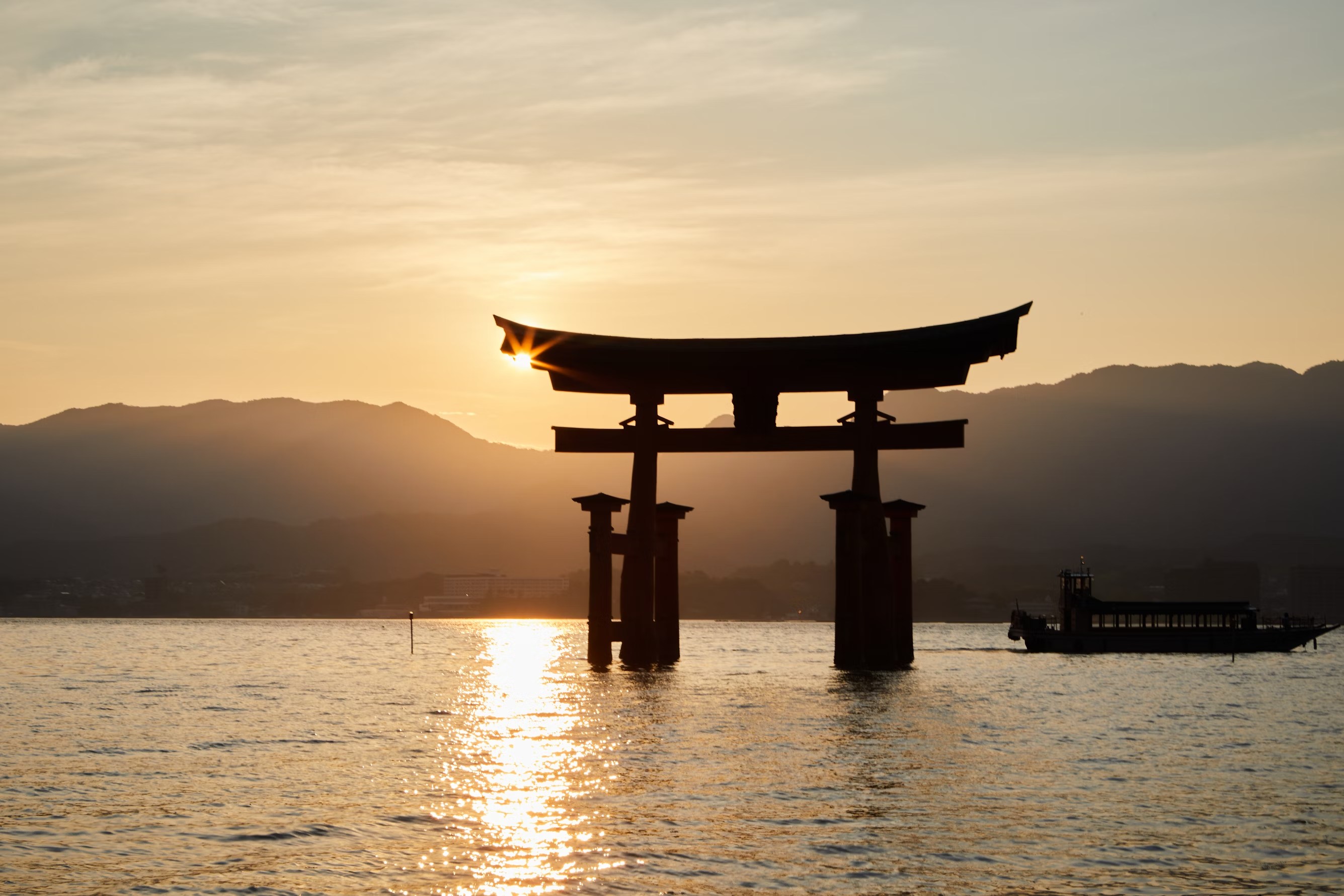

Otorii / Itsukushima Shrine
The “Otorii” of Itsukushima Shrine is built to float on the sea, appearing as if it were floating on the surface of the water at high tide. This distinctive arrangement derives from the fact that Itsukushima Shrine considers the entire island of Itsukushima, which is considered “God's Island,” to be sacred, and it has been regarded as symbolic of the boundary between the two. The existing Otorii structure was built in 1875, and the one seen today is believed to be the eighth generation. Its materials include camphor trees that are more than several hundred years old, and the massive timbers were carefully selected to ensure their long-term preservation. The torii gate is approximately 16 meters high, and the main pillar is approximately 10 meters in diameter. By design, it stands on its own weight without piles driven into the seabed, and this structure is a masterpiece of traditional construction techniques. Designed to withstand typhoons, waves, and other natural conditions, it has been maintained and restored over the years by the local people. The history of the Otorii gate is said to date back to ancient times, but records of its specific origin are vague. However, tradition has it that Itsukushima Shrine itself was founded in 593 (Asuka Period), and the Otorii is thought to have been positioned as a central element of the island's faith from that time. In the late Heian period, Taira no Kiyomori rebuilt Itsukushima Shrine, and the Otorii came to be recognized as an important part of it. Since then, it has been revered by many people and has endured as a symbol of cultural and religious significance. In recent years, restoration work began in 2020 and was completed in 2022. This restoration was an important effort to pass on its appearance to future generations.